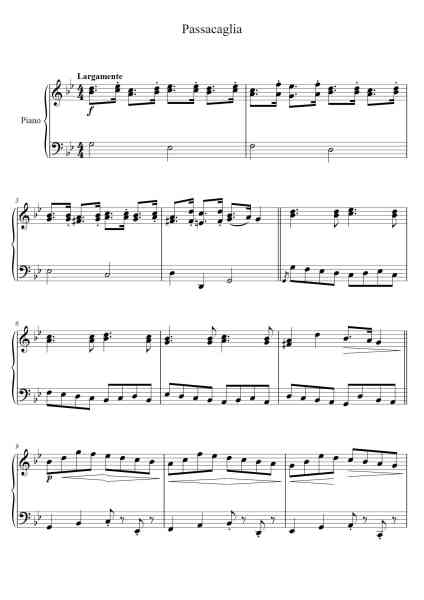
Passacaglia in G Minor for Violin and Viola, Op. 20 No. 2
Johan Halvorsen/George Frideric Handel
1.8K การดู

Passacaglia in G Minor for Violin and Viola (Handel/Halvorsen)
George Frideric Handel/Johan Halvorsen
1.1K การดู

Passacaglia in G Minor for Violin and Viola (Handel/Halvorsen) "Easy Version"
Georg Friedrich Händel
980 การดู

Passacaglia in G Minor for Violin and Viola (after Handel) by Halvorsen
Georg Friedrich Händel
502 การดู

Passacaglia in G Minor for Violin and Viola (after Handel), HWV 432: VI. Passacaglia
Johan Halvorsen
465 การดู

Passacaglia in G Minor for Violin and Viola (Handel/Halvorsen) arr. Pianistos
Georg Friedrich Händel
457 การดู

Passacaglia in G Minor for Violin and Viola (Piano Solo arr. by Johan Halvorsen)
Georg Friedrich Händel
249 การดู

Passacaglia in G Minor for Violin and Viola (after Handel), by Johan Halvorsen
Georg Friedrich Händel
248 การดู

Passacaglia in G Minor for Violin and Viola (after Handel) by Johan Halvorsen
G. F. Handel/Johan Halvorsen
181 การดู
Roblox Sheet

Roblox Sheet
Passacaglia in G Minor for Violin and Viola (after Handel)
Georg Friedrich Händel
สัมผัส Passacaglia in G Minor for Violin and Viola (after Handel) โดย Georg Friedrich Händel ในแบบใหม่! ใช้คีย์บอร์ดของคุณเพื่อเล่น Passacaglia in G Minor for Violin and Viola (after Handel) Roblox แผ่นโน้ตเปียโนบนคีย์บอร์ดเสมือน ไม่ว่าคุณจะเป็นผู้เล่นเกม roblox เปียโนหรืออยากฝึกฝนบทเพลงคลาสสิค แผ่นโน้ตเปียโน Roblox นี้เหมาะสำหรับคุณ โดยช่วยให้คุณก้าวไปจากผู้เริ่มต้นสู่ผู้เชี่ยวชาญ Passacaglia in G Minor for Violin and Viola (after Handel) อยู่ใน TOP 100 ของแผ่นโน้ตเปียโน Roblox พร้อมด้วยเพลงง่ายๆ เพลงคลาสสิก เพลงป๊อป เพลงคริสต์มาส และเพลงจากดิสนีย์ให้คุณได้เล่น!
66 การดู
Roblox Sheet

Roblox Sheet
Passacaglia in G Minor for Violin and Viola (after Handel)
Johan Halvorsen
สัมผัส Passacaglia in G Minor for Violin and Viola (after Handel) โดย Johan Halvorsen ในแบบใหม่! ใช้คีย์บอร์ดของคุณเพื่อเล่น Passacaglia in G Minor for Violin and Viola (after Handel) Roblox แผ่นโน้ตเปียโนบนคีย์บอร์ดเสมือน ไม่ว่าคุณจะเป็นผู้เล่นเกม roblox เปียโนหรืออยากฝึกฝนบทเพลงคลาสสิค แผ่นโน้ตเปียโน Roblox นี้เหมาะสำหรับคุณ โดยช่วยให้คุณก้าวไปจากผู้เริ่มต้นสู่ผู้เชี่ยวชาญ Passacaglia in G Minor for Violin and Viola (after Handel) อยู่ใน TOP 100 ของแผ่นโน้ตเปียโน Roblox พร้อมด้วยเพลงง่ายๆ เพลงคลาสสิก เพลงป๊อป เพลงคริสต์มาส และเพลงจากดิสนีย์ให้คุณได้เล่น!
51 การดู










